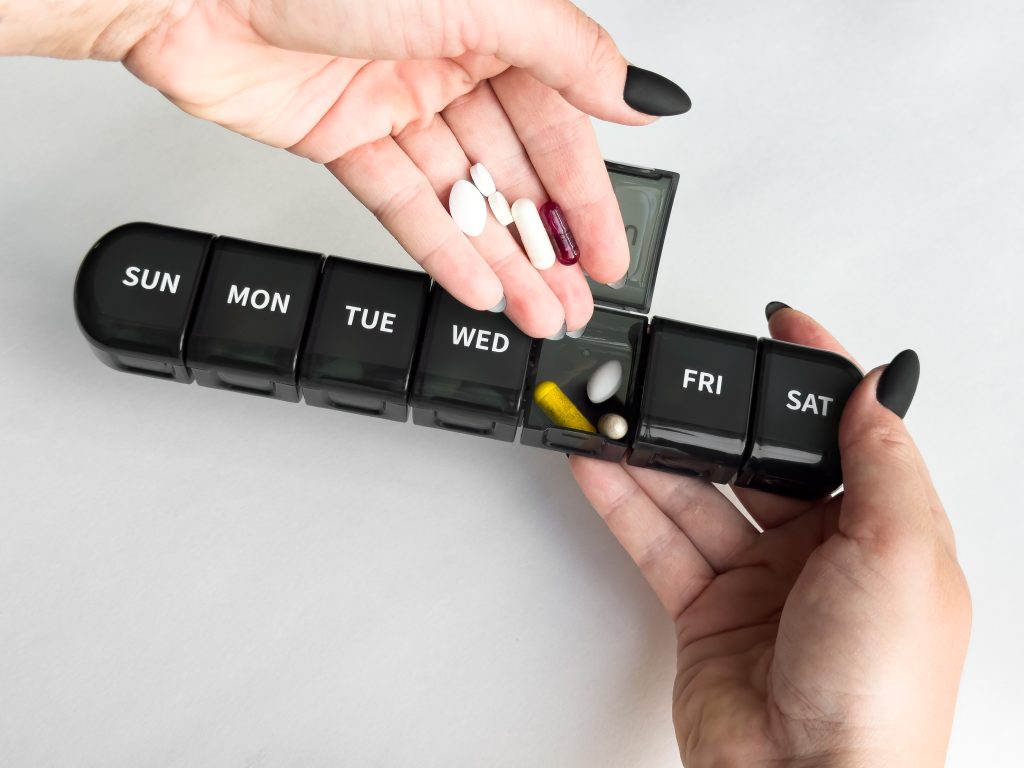
Obesity is a major risk factor for the development of type 2 diabetes, hypertension, cardiovascular diseases, metabolic syndrome and cancer. At Embrace Eternal Beauty Aesthetics and Wellness we combine advanced nutritional science, medical-grade skin therapies, and sustainable weight management solutions to help you look and feel your best. Whether you are seeking metabolic optimization, radiant skin, or a full-body transformation, our expert team delivers personalized care in a refined, results-driven setting.
We provide compounded Semaglutide and Tirzepatide injections as part of our weight loss program, combining evidence-based medicine and nutrition with comprehensive medical oversight and support to help you achieve your goals.
Under the guidance of Dr. Pabona and with consistent monitoring, we make sure your regimen is both safe and effective—providing peace of mind and the best chance for long-term success. By combining evidence-based medicine with personalized nutrition support with our Registered Dietitian, we help you achieve optimal results with confidence. Each patient will get the tools needed- receive expert coaching, curated meal plans, practical recipes, and educational guides—all designed to support sustainable nutrition and long-term success.

Q&A
What is Semaglutide and Tirzepatide?
Semaglutide is a medication used to manage Type 2 Diabetes Mellitus. It belongs to a class of glucagon-like peptide 1 (GLP1) receptor agonists that increases insulin secretion and decreases glucagon release in response to meals which helps to lower blood sugar levels. It also slows gastric emptying (how quickly food leaves the stomach) and acts on the brain to reduce hunger that leads to decreased food intake (appetite control) and causes subsequent weight loss.
Tirzepatide on the other hand is a combined glucose-dependent insulinotropic polypeptide (GIP) and GLP1 receptor agonists. It works by mimicking the actions of both GIP and GLP1 which stimulates insulin secretion in response to high blood sugar levels and also reduces glucagon release that helps lower blood sugar. GIP/GLP1 agonists slow gastric emptying and also acts on the brain to suppress appetite and increase satiety leading to reduced calorie intake.
What are the common side effects?
Nausea, vomiting, diarrhea, constipation, decreased appetite, abdominal discomfort and fatigue.
Is This Treatment Right for You?
You should not take this medication if you have any of the following:
- Personal or family history of Medullary Thyroid Carcinoma (MTC) or Multiple Endocrine Neoplasia Syndrome Type 2 (MEN 2).
- Gastroparesis
- History of Pancreatitis
- Diabetic retinopathy
- Any known hypersensitivity (allergy) to the medication or its components
- Severe renal impairment
- Pregnancy and breastfeeding
Ask Dr. Pabona for more details!
WEIGHT LOSS PROGRAM OVERVIEW
Gradual Dose Escalation

Starting Doses: GLP1 and GLP1/GIP medications often start at low doses to minimize side effects, such as nausea or digestive upset. The dose is then gradually increased over several weeks, usually 4 weeks.
Semaglutide
The starting dose may be 0.25 mg/week for 4 weeks, then 0.5 mg/week, and eventually increase to the maintenance dose of 2.4 mg/week.
Tirzepatide
The starting dose may begin at 2.5 mg/week for 4 weeks and increase gradually up to 15 mg/week.
Dietary Changes

Calorie Restriction: A calorie deficit is still the cornerstone of weight loss. The medications can help reduce hunger and cravings, making it easier to follow a lower-calorie diet.
Protein-Rich Diet: Increasing protein intake can help improve satiety and preserve lean muscle mass during weight loss. Aim to include lean protein sources such as chicken, fish, tofu, and legumes.
Whole Foods Focus: Emphasize nutrient-dense foods, including fruits, vegetables, whole grains, and healthy fats (e.g., avocado, nuts, olive oil).
Portion Control: Due to the appetite-suppressing effects of GLP1 and GLP1/GIP medications, portion sizes may naturally decrease, but it’s still essential to be mindful of eating habits.
Exercise

Regular Physical Activity: Aim for 150 minutes of moderate-intensity aerobic exercise per week (e.g., brisk walking, cycling, swimming). Incorporate strength training twice a week to maintain muscle mass.
Increased Daily Movement: Besides formal exercise, incorporating more movement into daily routines (e.g., walking, standing more, taking the stairs) can support weight loss.
Behavioral Support

Counseling or Therapy: Cognitive behavioral therapy (CBT) or weight management counseling can help address emotional eating, create sustainable healthy habits, and improve adherence to lifestyle changes.
Monitoring and Tracking: Regularly tracking progress—such as keeping a food diary, measuring weight, and noting exercise—can help maintain focus and identify areas that need adjustment.
Ongoing Medical Supervision

Regular Check-ins: Follow-up with a healthcare provider is essential for monitoring side effects, adjusting the medication dose, and ensuring that the program is effective.
Laboratory Tests: Periodic assessments of blood sugar levels, cholesterol, liver function, and kidney function are typically done to ensure safety and track metabolic health improvements.

Expected Outcomes
Weight Loss: GLP1 and GLP1/GIP receptor agonists have shown to help individuals lose 5-15% of their body weight or more, depending on the medication and individual response.
Appetite Control: These medications help significantly reduce hunger, making it easier to adhere to a calorie-restricted diet.
Improved Metabolic Health: GLP1/GIP combinations may provide additional benefits, like enhanced insulin sensitivity and improved blood sugar control.
Key Considerations
Side Effects: Some side effects can include nausea, vomiting, diarrhea, or constipation. Starting at a low dose and gradually increasing can help minimize these issues.
Long-term Use: GLP1 and GLP1/GIP medications are typically used for long-term weight management. Discontinuation may lead to weight regain, so it’s essential to maintain the accompanying lifestyle changes even if medications are stopped.
Incorporating Semaglutide and Tirzepatide into a weight loss program can be highly effective, especially when combined with healthy eating and regular exercise. Always work with your healthcare provider to design a program tailored to your individual needs and monitor your progress regularly.

Semaglutide and Tirzepatide Weight Loss Program
Pricing & Information
Program Fee: $250.00
Includes initial visit with the Physician and Registered Dietitian **
Follow-Up Visits with Physician: $80
Every 3 months or as needed.
Labs: $50
Baseline labs required if no blood work has been done within 3 months prior to starting the program. Follow-up labs every 3–4 months or as needed.
Cost of Medication (see below):
Includes monthly visits with registered Registered Dietitian, weekly injections and supplies
SEMAGLUTIDE
Dose & Pricing
- 0.25 mg – 0.5 mg: $275 / 4 weeks
- 0.75 mg – 1.0 mg: $325 / 4 weeks
- 1.75 mg – 2.4 mg: $375 / 4 weeks
TIRZEPATIDE
Dose & Pricing
- 2.5 mg – 5.0 mg: $350 / 4 weeks
- 10 mg – 15 mg: $650 / 4 weeks
**The initial assessment with our Registered Dietitian involves evaluating your total caloric needs, reviewing current dietary habits, and tracking progress. You will receive a personalized nutrition plan, along with education and coaching to support your goals.

